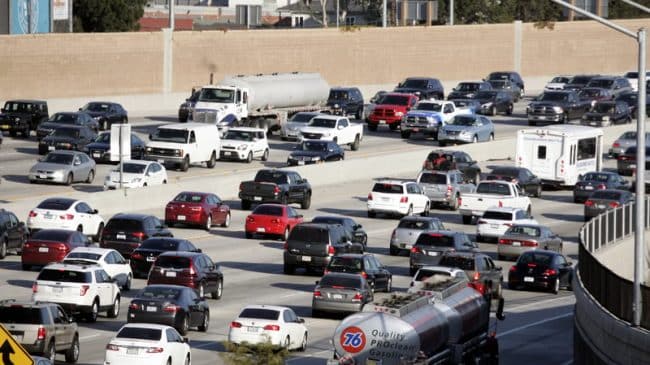For eight hours a day seven days a week, the slow crawl of the I-405 freeway is painfully apparent. A fixture of Los Angeles living, equal in legend to the Hollywood sign or the Santa Monica pier, the 405 leaves a mark of transportation issues lurking beneath the surface. While transportation planners like to tote investments in rail infrastructure, private automobile transportation in Greater Los Angeles still serves the lion’s share of the region’s transportation needs. The only way to keep our main transportation system moving at a constant reliable pace 24 hours a day is through electronic toll lanes.
The greater Los Angeles region and the surrounding counties including Orange, Riverside, San Bernardino and Ventura have experienced decreasing mobility in recent decades as the increase in automobile travel demand outstrips capacity. Currently, the cost of Greater Los Angeles’ inefficient personal transportation infrastructure totals $13.3 billion in wasted gasoline and time.
The most viable free-market solution to our congested roadways is electronic tolling. Sprinkled throughout the greater Los Angeles region are a set of electronic toll lanes. So far they have served as successful alternatives to general purpose or un-tolled freeway lanes. They are able to generate a positive cash flow, which helps maintain the road by covering depreciation and capital expenditures. Electronic toll lanes have also provided funding for othertransportation needs such as bus operations. The 110 freeway and 10 freeway electronic toll lanes in Los Angeles and the 91 Express toll lane in Orange County provide working examples of electronic toll lanes in action.
While the initial investment cost of implementing electronic toll lanes will be one of the largest hurdles to making electronic toll lanes a viable transportation option, electronic toll lanes do a very good job at maintaining a constant traffic flow. In contrast, the more traditional toll lanes require toll plazas, which create weaving traffic and lead to accidents. Users of electronic toll lanes are traced through a system widely known as Automatic Vehicle Identification (AVI). AVI may include a laser reader, radio frequency identifiers or license plate readers for billing purposes. The user will pay either on a trip-by-trip basis, through a prepaid account with the tolling service, or by a bill generated in a given cycle.
The main benefit electronic toll roads provide isconstant traffic flow. Adjustable toll rates based on peak and off-peak demand create a consistent stream of traffic and a steady traffic flow. This smooth flow of traffic provides a consistent travel time that reduces the buffer time needed to travel from point A to B.
Toll lanes are financially efficient. Our current highway system has no financial ramifications for those that use it inefficiently. However, electronic toll lanes can play an integral role in incentivizing motorists to plan trips wisely. Drivers will plan multiple errands on the same trip reducing the number of trips per day thus helping to alleviate congestion.
Electronic toll lanes also provide the benefit of commuter insurance. When punctuality is vital such as attending at an important meeting or a high priority event, the electronic toll lane user can pay an extra fee to help insure prompt arrival.
For the most part, the greater Los Angeles highway system has been shielded from the market forces of supply and demand. With no barrier to entry there will naturally be an abundance of demand. With electronic toll lanes we can see a practical solution for Los Angeles’ congestion problem. Increased flexibility, reliability and a constant flow of traffic make electronic toll lanes a positive addition to the portfolio of Los Angeles’ transportation infrastructure

